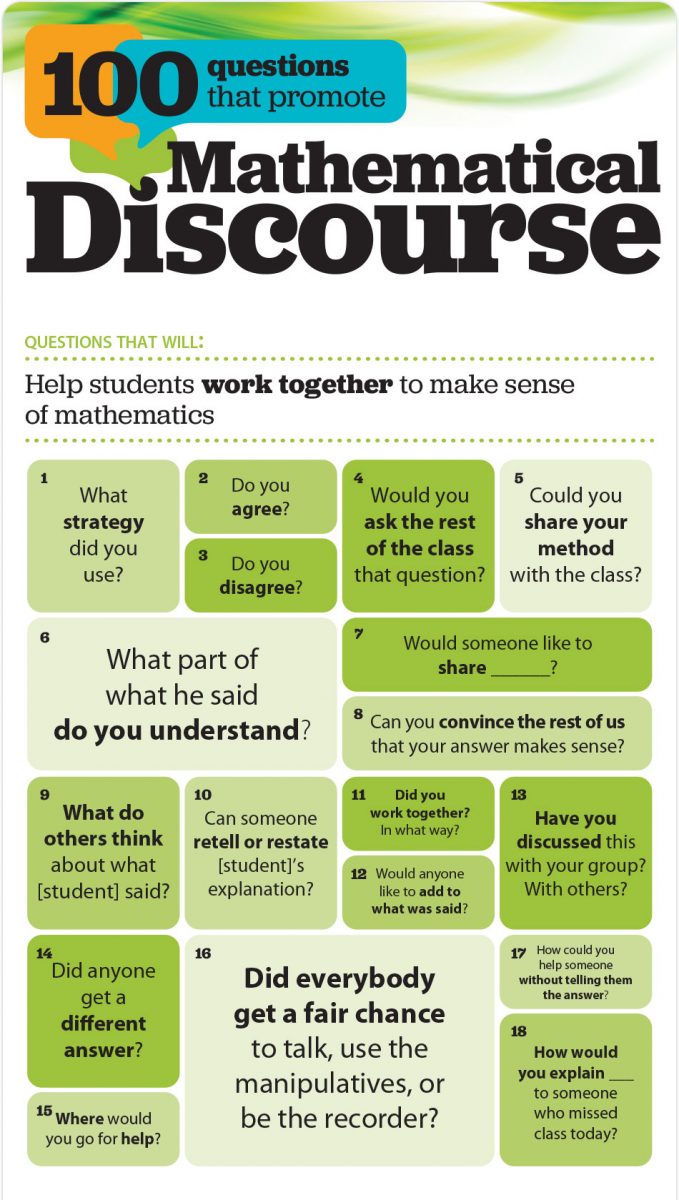Harvard Graduate School of Education (Neag School’s Don Leu, an upcoming featured speaker at Harvard, was interviewed about online learning)
100 Questions That Promote Mathematical Discourse
 Asking better questions can open doors for students, promoting mathematical thinking and discourse.
Asking better questions can open doors for students, promoting mathematical thinking and discourse.
A set of 100 questions that can be incorporated into mathematics instruction — created by the Neag School Dean Gladis Kersaint, who serves as an advisor for Ready® Mathematics — have been made available online as free infographics.
Click here to download all of the free infographics, including the one at right.
In addition, a white paper — titled “Orchestrating Mathematical Discourse to Enhance Student Learning” and authored by Kersaint — is also free for download until Sept. 30.
The white paper examines why discourse plays such an important role in furthering student understanding of mathematical concepts, and outlines strategies to support mathematical discussion in today’s classrooms, including:
- Strategies for engaging every student in mathematical discourse
- Classroom environments that support mathematical dialogue
- Tools to plan and lead discourse
- Different approaches for communicating mathematical knowledge
Historically Black Schools Pay the Price for a Football Paycheck
The New York Times (Neag School professor Joseph Cooper weighs in on the topic)
Judge From Groton Was Well Suited to Take on School Funding Case
The Day (Neag School’s Preston Green weighs in on the recent Connecticut school funding decision)
Task Force to Study School Climate Sept. 15 Meeting
CT-N (Neag School faculty member, Tamika LaSalle, and Neag alumnus, Desi Nesmith, speak at hearing at Connecticut State Capitol)
At SCSU, Conn. Academics Offering Support to Students of Color
New Haven Register (UConn’s Scholars House program is mentioned, which is lead by a Neag School faculty member)
Studies Flag Potential Downside to Inclusion
Education Week (Neag School’s George Sugai is interviewed for this story)
UConn Researchers Make Most of $3 Million Grant
Daily Campus (Researchers in the Neag School and UConn’s College of Agriculture, Health, and Natural Resources have teamed up to create an education program made possible by a NSF grant)
What Connecticut’s Schools Reveal About National Education Inequality
On Point Radio (Preston Green appears as a guest on WBUR’s discussion regarding recent court ruling on school funding in Connecticut)
National Science Foundation Awards $3M Grant to Neag Professors
Hartford Courant (Neag School and UConn professors were awarded nearly $3 million in funding from the National Science Foundation’s Advancing Informal STEM Learning)
